Architectural witness to the presence of Jews in Hungary, the Great Synagogue of Budapest has nothing classical. The largest synagogue in Europe and proportionally as imposing as a cathedral, it became a must in the Hungarian capital.
Locally, his name is Dohány utcai zsinagóga Either the synagogue on Dohány Street. Located in the seventh district of the city, the Great Synagogue of Budapest is known worldwide for its symbolism. However, its architectural preference is appreciated by all.
History of the Great Synagogue of Budapest
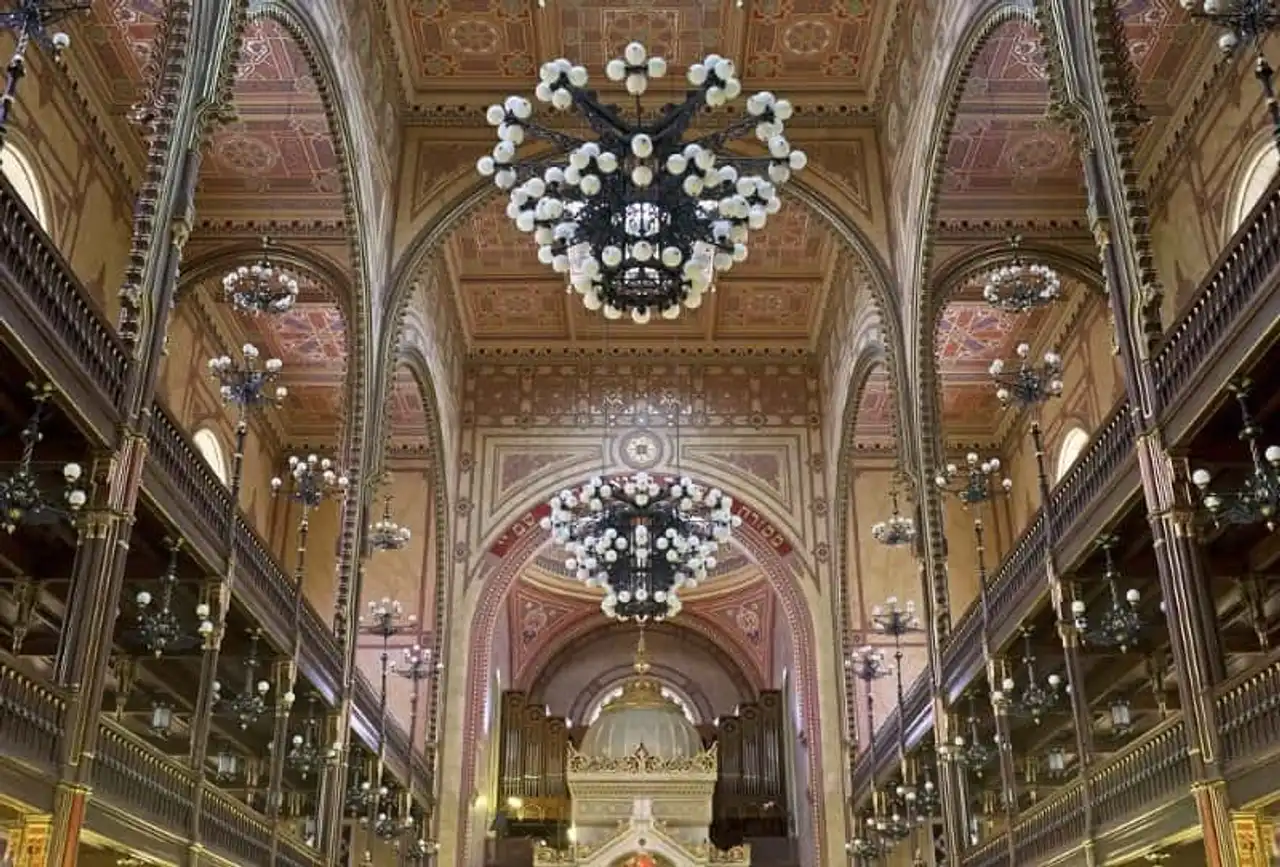
Photo credit: Shutterstock / Zyankarlo
His architect, Ludwig Förster, of German origin, was recognized at that time for his religious constructions. Non-Jewish, however, it is at the origin of one of the most beautiful synagogues in the world. The building was built after 5 years of work, between 1854 and 1859. The important Hungarian Jewish community of the 19th century partly explains the proportions of the synagogue. Indeed, it was imagined that more than 3,000 faithful could go there – the women on the floor, the men on the ground floor. It is important to know that this community represented a quarter of Budapest’s population at the time.
In this sense, the Great Synagogue of Budapest has a very heavy history. First, it was attacked by the Nazi militias just before the outbreak of the Second World War. Then, in the course of the war, it was requisitioned for the purpose of a camp for the Hungarian Jews. Some of them were sent to extermination camps. The others died on site, in different ways (whether hungry, forced labour, undernutrition, abuse...). The building risks destruction several times, until the Germans transform it into a radio base and a stable. At the end of November 1944, a ghetto was installed around the Nazis. The remains are still visible today.
What to see in the Great Synagogue of Budapest
The synagogue
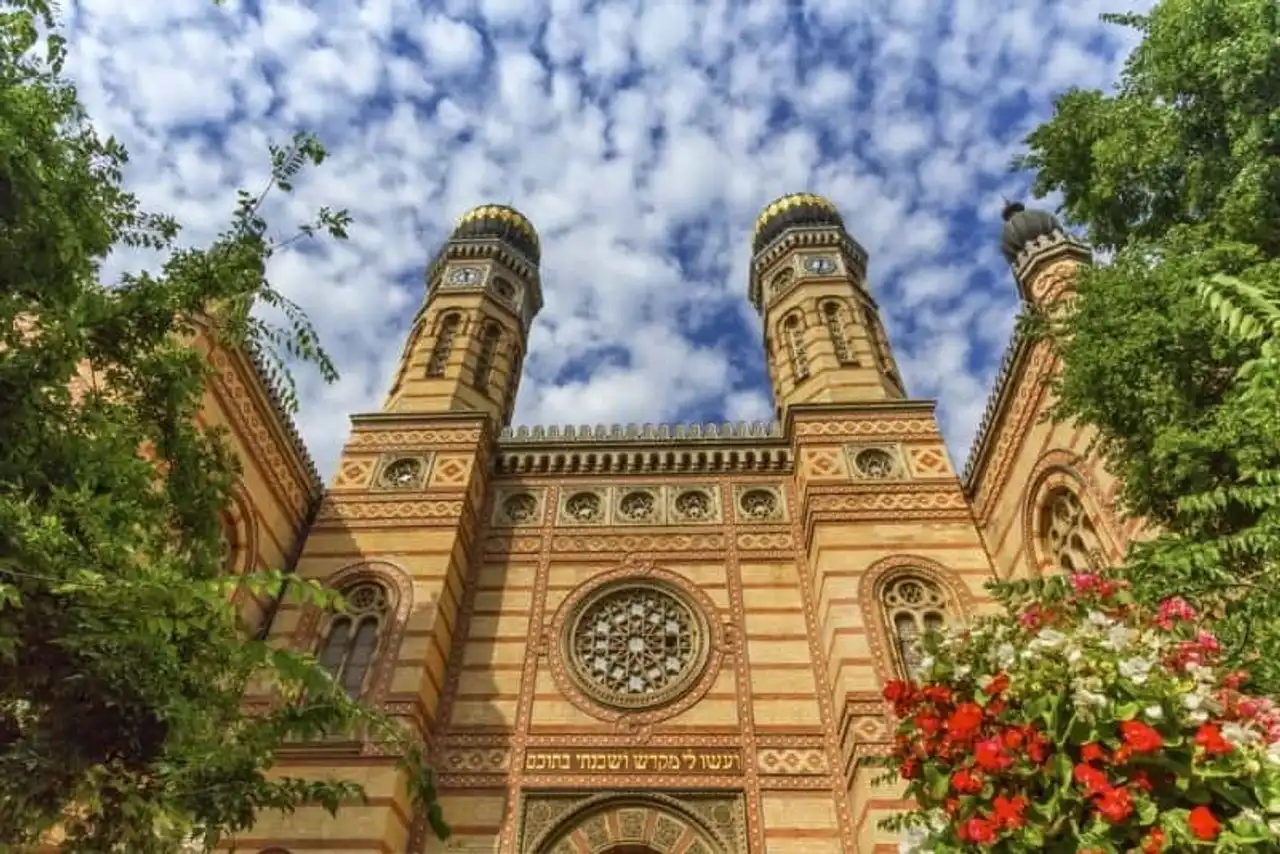
Photo credit: Shutterstock / Elenarts
There are many things to observe inside and outside the Great Synagogue of Budapest. First of all, because it really bears its name: 75 meters long over 27 meters wide. But also because it was a monument that had several influences during its construction. You will thus find several architectural styles, which cross and mix, in a perfect harmony: the maureque, the romantic, and even the gothic. For example, the two large towers, with the bulb-shaped blade, largely evoke mosque towers and oriental minarets. Impassioned chandeliers dress the interior of the synagogue, reminding of oriental, rounded and elegant decorations.
The yellow and red bricks make this synagogue a visually uncommon building. Richly decorated, its facade is fascinating, made to discover details about its history and its raison d’être.
The inner provision is not without recalling the provision of the Christian churches. Let's see. bimah closer. Indeed, this stage where the rabbi is traditionally held, is placed in the centre as Christian altars. This style differs from the more Orthodox synagogues. The Hungarian synagogue also has two chairs, structures accessible by a small staircase, arranged on the lateral edges of the building. Also, it is one of the only synagogues to possess an organ, while it is strictly forbidden to play an instrument of music during the great celebrations, such as Shabbat (weekly rest day in the Jewish religion), for example.
The garden of the synagogue
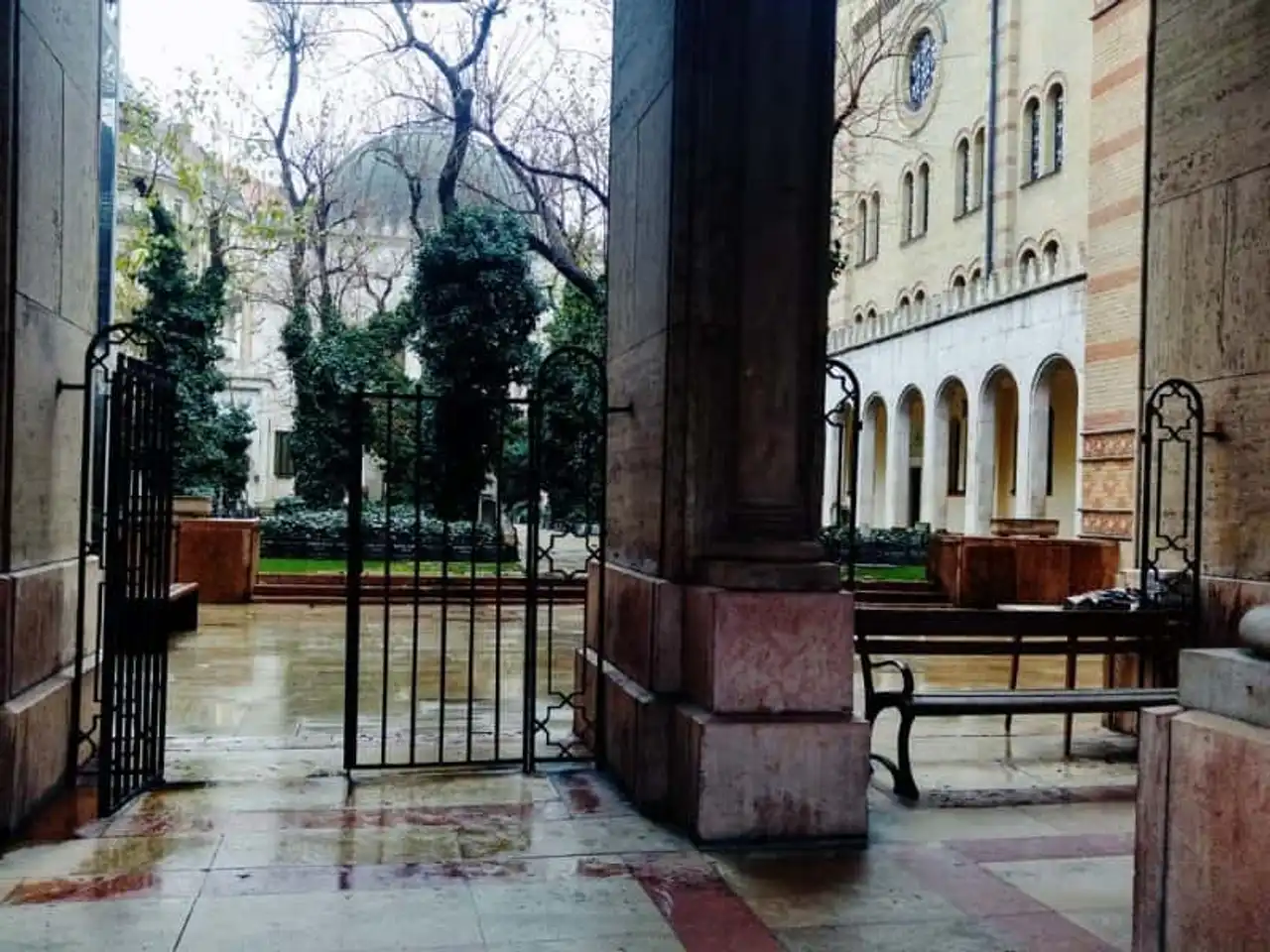
Photo credit: Shutterstock / Loren Moreno
The Jewish Museum
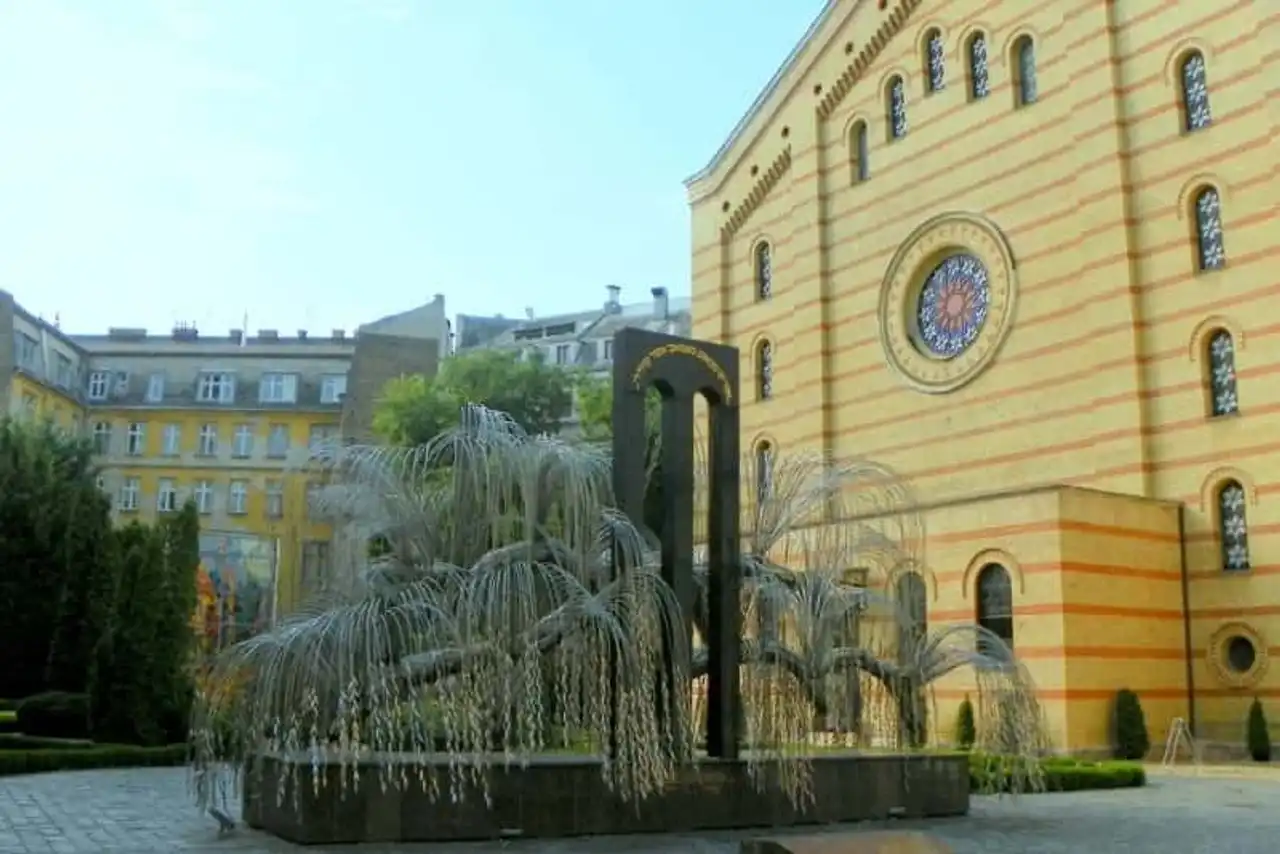
Photo credit: Shutterstock / De Liub Shtein
Finally, attached to the Great Synagogue of Budapest, the Jewish Museum has many archives. His collection is one of the most important about Hungarian Jews. It illustrates the history of this community through the demonstration of objects, manuscripts, textiles and paintings.
How to go to the Great Synagogue of Budapest
There are several ways to access the synagogue, located at the following address: 1074 Budapest, Dohany utca 2.
If you are already in town, you can easily walk to the Danube. There is also the option of the metro: the M1, M2 and M3 lines can take you near the synagogue (Deák Ferenk stop), but the M2 line has the nearest stop (astoria stop).
The Hungarian capital is also very well served by buses and trams. By bus, several lines (including 133E, 5, 7 and 9) will drop you at the Astoria M stop (almost at the same stop as the M2 metro line).
As for the tram journey, lines 47 and 49 are the ones that properly serve the synagogue. Of course, depending on your location in the city, it is determined on a case-by-case basis. However, joining bus and subway remains the simplest solution if you don’t find yourself on a direct line.
The prices of public transport in Budapest are determined by the number of stops/stations covered. The base price for 3 stops is 350 forints, about 1.20 euro. We advise you to buy a 10 notebook directly, as tickets are not nominal, or a 72-hour Budapest Card (to 4950 forints, or 16,70 euros).
Prices of the Great Synagogue of Budapest?
Schedule
Visiting the synagogue is possible all year round, except on Saturday, during which it is closed to the public.
- Monday to Thursday from 10:00 to 18:00;
- Friday from 10:00 to 16:00;
- Sunday from 10:00 to 6:00.
To visit the Great Synagogue of Budapest in its entirety, plan between 30 minutes and an hour, if you do not choose to do so with a guide. The guided tours last longer, for one to two hours, according to the chosen provider. Please note: There are many services available on the internet or on site, prices and durations of visits can vary, depending on what is included: entry to the synagogue, Jewish Museum, with or without transfer. It is up to you to choose what is best for you.
Rates
The Hungarian currency is not the euro, but forint.
The entrance into the synagogue costs about 3000 forints, which is almost 10 euros, for an adult. This rate allows you to visit the Great Synagogue of Budapest and also gives you access to the Jewish Museum, acclaimed. This will cost you between 3280 and 6560 forints if you choose to accompany you with a guide. This represents the equivalent of 10 to 20 euros depending on the benefit. Finally: reductions are applied for students, seniors and children between 6 and 14 years of age. Under 6 years, the entrance is free.
Good to know.
- to visit the Great Synagogue of Budapest, you are asked to wear a decent outfit (covered shoulders, in particular), whether you are a man or a woman. If you are not properly dressed, you will be asked to buy a single-use garment for a cost of 1000 HUF;
- a kippa of paper is distributed to men at the entrance of the synagogue. For more practice, carry with you a hairpin (invisible type) to keep the kippa perfectly during the visit;
- it is not possible to visit the Great Synagogue during Jewish celebrations neither during the hours of prayers that take place from Monday to Friday at 7:30 and 6:00; Sunday at 8:00 and 17:00 and public holidays at 8:00;
- certain days ferment exceptionally, for example for religious reasons, we advise you to check in advance when planning your visit.
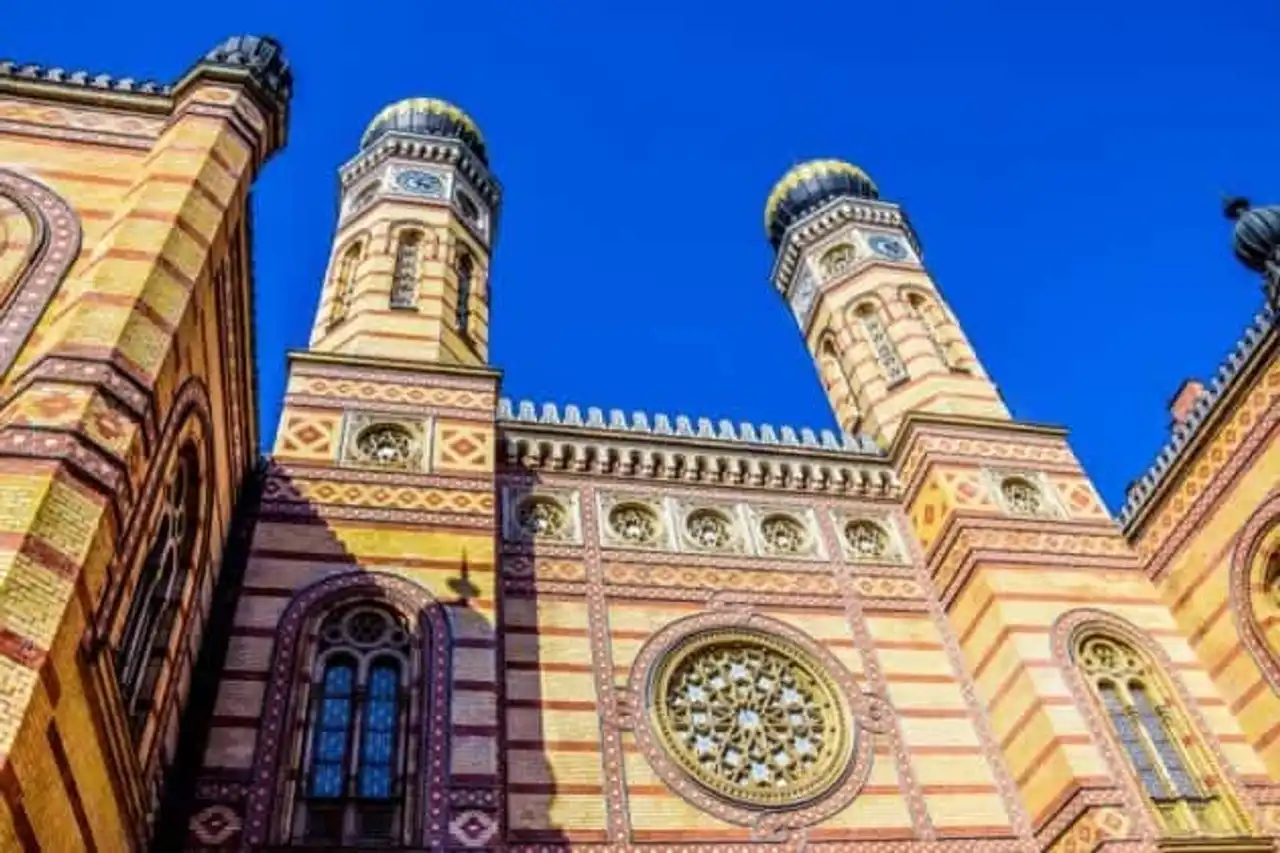







Loading comments ...